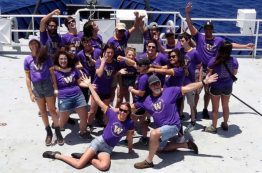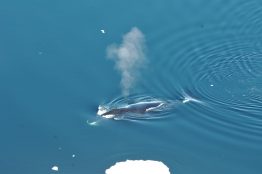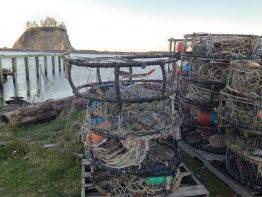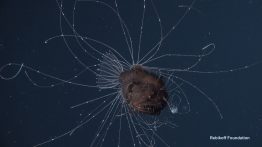Beginning July 1, UW Environment’s School of Oceanography will have a new director. Professor Rick Keil has agreed to serve a five-year term where he will lead faculty, staff and students studying biological, chemical and physical oceanography, as well as marine geology and geophysics. Keil has been serving as the director of the Program on the Environment and has proven to be an effective and collaborative leader.
Read more »UW undergrads set sail on an immersive adventure
Students on the 2018 Spring at Sea trip are doing oceanographic research, studying celestial navigation, reading ancient literature, and gaining hands-on experience aboard a research vessel.
Read more »Bowhead whales, the ‘jazz musicians’ of the Arctic, sing many different songs
A University of Washington study has published the largest set of recordings for bowhead whales to discover that these marine mammals have a surprisingly diverse, constantly shifting vocal repertoire. The study, published April 4 in Biology Letters, a journal of the United Kingdom’s Royal Society, analyzed audio recordings gathered year-round east of Greenland. This population of bowhead whales was hunted almost to extinction in the 1600s and was recently estimated at about 200 animals.
Read more at UW Today »Partnering with indigenous communities to anticipate and adapt to ocean change
The productive ocean off Washington state’s Olympic Coast supports an abundant web of life including kelp forests, fish, shellfish, seabirds and marine mammals. The harvest and use of these treaty-protected marine resources have been central to the local tribes’ livelihoods, food security and cultural practices for thousands of years. But ocean acidification is changing the chemistry of these waters, putting many coastal species — and the human communities that depend upon them — under threat.
Read more at UW Today »First-ever observations of a living anglerfish, a female with her tiny mate, coupled for life
Down deep off the south slope of São Jorge Island in the Azores, west of Portugal in the North Atlantic Ocean, a fearsome-looking fish and her parasitically attached mate drift almost helplessly, salvaging precious energy in their dark, food-scarce environment. The pair, a species never before seen alive by humans, was recorded recently on camera by researchers Kirsten and Joachim Jakobsen aboard the LULA1000, a submersible operated by the marine science-focused Rebikoff-Niggeler Foundation.
Read more at UW Today »





